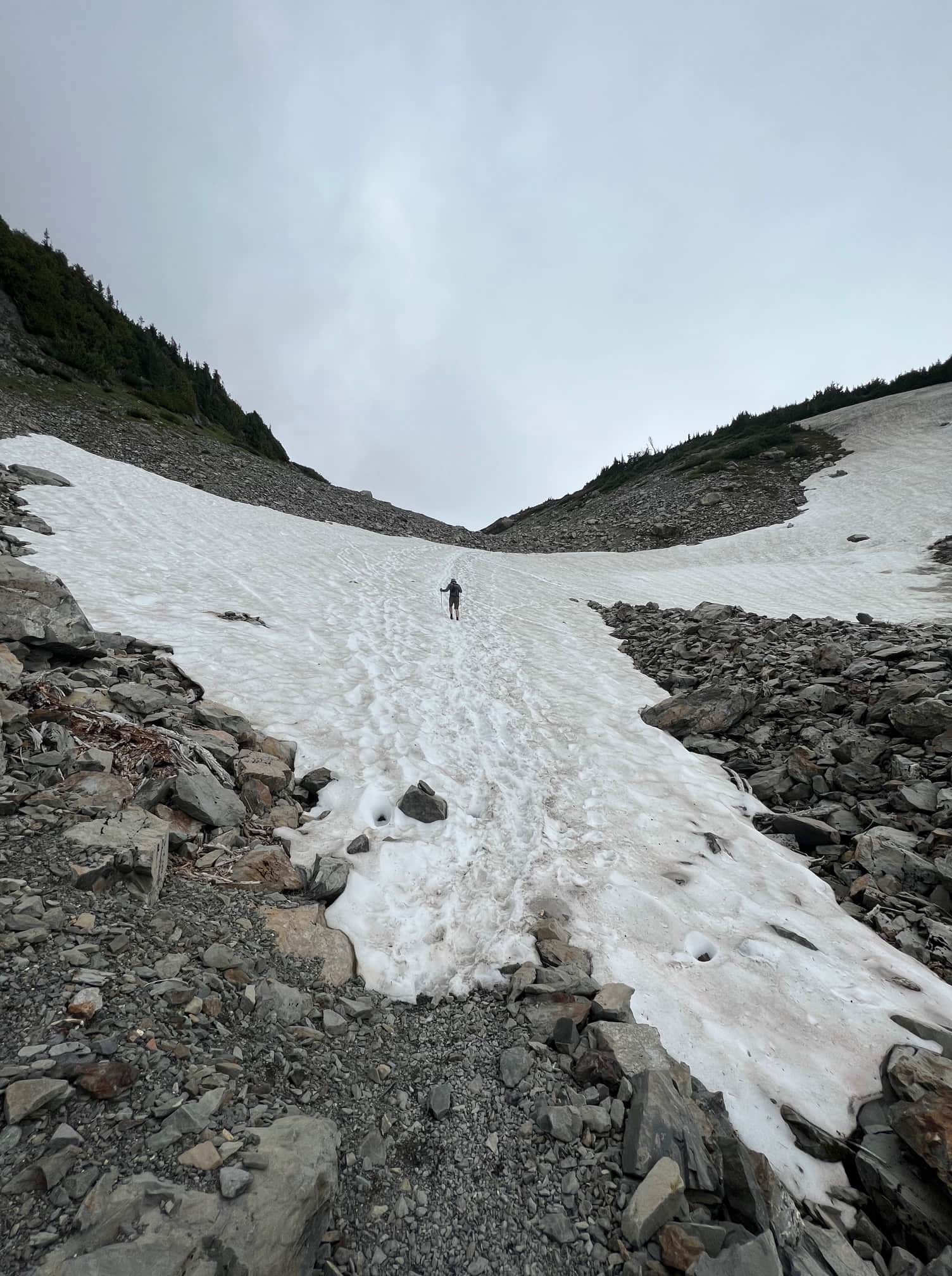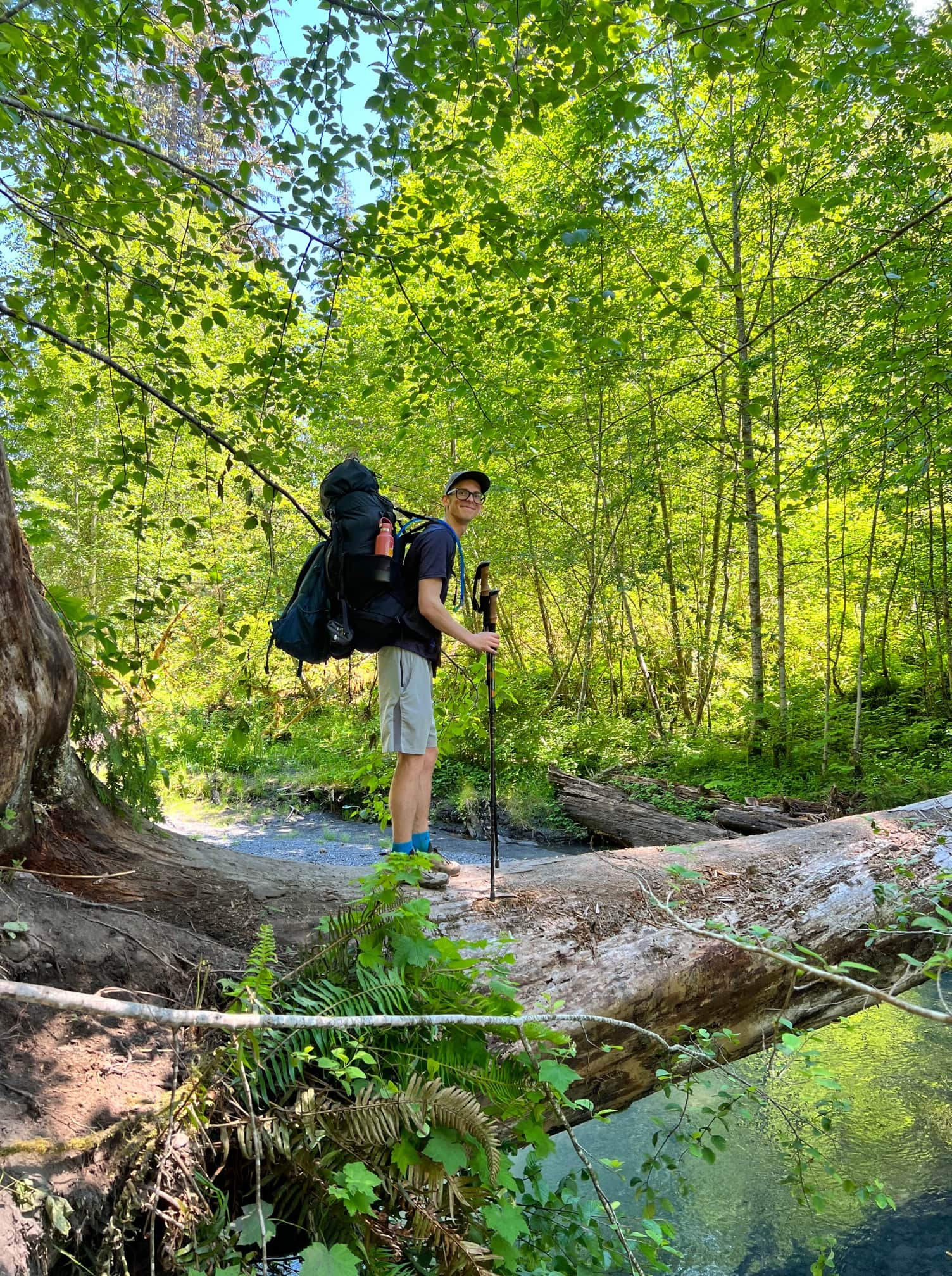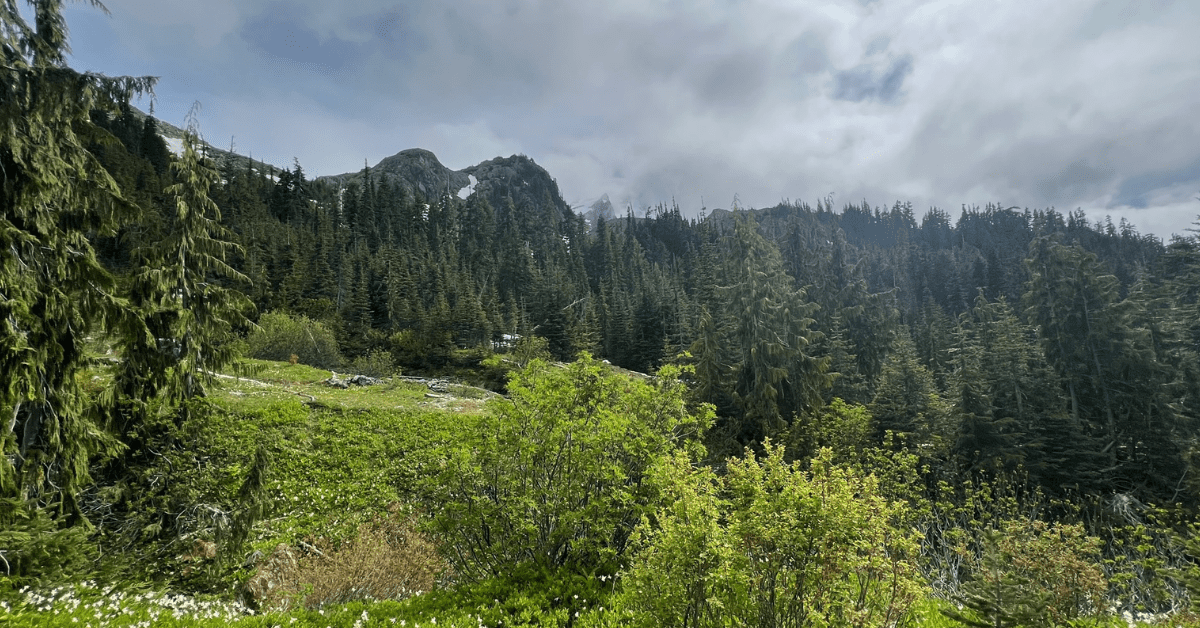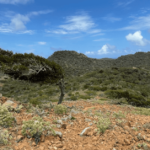The nearly 700,000 acres of lush forests and jagged peaks in the Pacific Northwest provide a home to a diverse range of wildlife. This large area means there are plenty of hiking trails in Olympic National Park to try out.
Its remote location makes it one of the lesser-known national parks in America, which means you can explore its trails without the risk of overcrowding.
In this blog post, we’ll take an in-depth look at 8 amazing hiking trails in Olympic National Park so you can plan your trip accordingly. Get ready for some serious splendor and uncrowded trails!
Hoh Rainforest Trail
The Hoh Rainforest Trail is one of the best ways to experience the lush rainforest that covers much of the Olympic Peninsula. It’s a short trail of 0.6 miles that loops through the Hoh Rain Forest, a UNESCO-designated biosphere.
The trail is well-maintained and easy to navigate. Hoh Rainforest Trail is best visited in the autumn, when the forest is changing color. The yellow cedars and red maples form a vivid contrast with the dark green ferns and mosses covering the ground.
The trail is a loop that starts from a boardwalk as you walk through moist, temperate rainforest. This trail is a wonderful introduction to Olympic’s varied ecosystems and makes for a great family hike. You’ll be able to see a variety of wildflowers in the spring, including trilliums and western red cedars. Keep an eye out for birds, including northern flickers, yellow-rumpled warblers, and the occasional bald eagle.
You can also extend this hike to a 30 miler and see Blue Glacier. I recently completed this trip backpacking.

Sol Duc Falls Trail
The Sol Duc Falls Trail is a 6.8-mile round trip hike in Olympic National Park that leads to the base of Sol Duc Falls. The Sol Duc River flows through a lush temperate rainforest brimming with wildlife. If you’re lucky, you might even spot a Roosevelt elk.
This trail is very well maintained, with wooden boardwalks in some of the more muddy patches. This trail is best undertaken in the spring or early summer, when the falls are flowing the strongest. You’ll be rewarded with a fantastic view of Sol Duc Falls, the second highest falls in the park.
There is a small suspension bridge near the falls that makes for a great photo op. You can extend the hike to include a side-trip to Sol Duc Hot Springs. The springs are open year-round and are a great place to relax after an invigorating hike.
Deer Lake Trail
The Deer Lake Trail is a moderate 8.3-mile out-and-back trail that leads to an alpine lake surrounded by wildflower-covered meadows. The trail starts in dense temperate rainforest, and you’ll quickly come to a fork in the trail. The right path leads to High Meadows, a bog teeming with birds.
The left path leads to the more interesting Deer Lake. The trail to the lake is easy to follow, with large wooden signs at each junction. Deer Lake is more like a small pond and is often muddy. Be prepared to get your feet wet!
The path to Deer Lake is relatively flat and is best done as a day hike. The trail begins in the rainforest, but as you approach the lake, the trees thin out and you’ll be surrounded by meadows full of flowers. The trail ends at a wooden dock on the lake’s edge. You can spend a few hours exploring the lake and surrounding meadows.
Morning Star Museum trail
The Morning Star Museum trail is a moderately difficult 8.2-mile out-and-back trail that leads to the remains of a Native American village. The trail is easy to follow and well-maintained, but you’ll need to watch out for muddy patches after a rain.
This trail is best undertaken in the spring or fall, when the weather is mild. You’ll want to avoid it during the rainier months of the year. The trail begins in a lowland temperate rainforest, but you’ll quickly ascend into a drier pine forest as you approach the ridge.
The museum is located at the edge of the ridge and is marked by a large cairn. The trail ends at the museum, but you can extend the hike by descending to Lake Angeles, a popular destination for day hikers.
St. Andrews By-way
The St. Andrews By-way is a lovely 9-mile out-and-back trail that leads to a secluded beach surrounded by towering cedars. The trail is moderate and well-maintained, with wooden bridges across the trickier sections.
You’ll want to avoid this trail during the rainy months and in the winter, when the trail is covered in snow. The trail is best visited in the spring or fall. The trail begins in a lowland temperate rainforest, with huge cedars and a dense understory.
The trail quickly ascends into a drier pine forest and continues to gain elevation as you approach the beach. You’ll have occasional views of the Pacific Ocean and the rugged Olympic coastline as you hike.
The trail ends on a sandy beach at the mouth of St. Andrews Creek. This is a great spot to go for a swim in the summer months. You can extend the hike by following the beach or exploring the nearby St. Andrews Ridge Trail.

Hidden Springs and Kala-moo Trails
The Hidden Springs and Kala-moo Trails are a moderate 6.8-mile out-and-back trail that leads to a subalpine meadow. The trail is well-maintained and is suitable for families and children.
You’ll want to visit this trail in the late spring or early summer, when the meadow is blooming with wildflowers. The trail can get muddy after heavy rains. The trail begins in a lowland temperate rainforest and quickly ascends into a drier subalpine forest as you approach the meadows.
The subalpine forest is blanketed in wildflowers in the spring and early summer. You’ll occasionally have views of the surrounding mountain peaks as you hike. The meadow is a great place to sit, relax, and enjoy the beautiful Olympic wilderness.
Russell-Mendenhall trail
The Russell-Mendenhall trail is a moderate 7.8-mile out-and-back trail that leads to a subalpine lake. The trail is moderately challenging, but you can make it easier by taking rest breaks at the many benches along the trail.
You’ll want to visit this trail during the dry months of June to September and avoid it in the rainy months of October to May, when the trail is prone to flooding.
The trail begins in a lowland temperate rainforest and quickly ascends into a drier subalpine forest. The subalpine forest is blanketed in wildflowers in the spring and early summer. You’ll occasionally have views of nearby mountain peaks and be able to see the Sol Duc River as you hike.
The trail ends at a small subalpine lake, where you can enjoy a picnic and go for a swim in the summer months.
Hammer blow trail
The Hammer blow trail is a moderately difficult 8.3-mile out-and-back trail that leads to a stunning subalpine lake. This trail is best done in the summer months and is unsuitable for families with younger children.
You’ll have to navigate a few patches of scrambling and climbing over large rocks. The trail is well-maintained and includes wooden bridges to make the trek easier. The trail begins in a lowland temperate rainforest, but you’ll quickly ascend into a drier subalpine forest.
The subalpine forest is blanketed in wildflowers in the spring and early summer. You’ll occasionally have views of nearby mountain peaks and be able to see the Sol Duc River as you hike.
The trail ends at a small subalpine lake, where you can enjoy a picnic and go for a swim.




